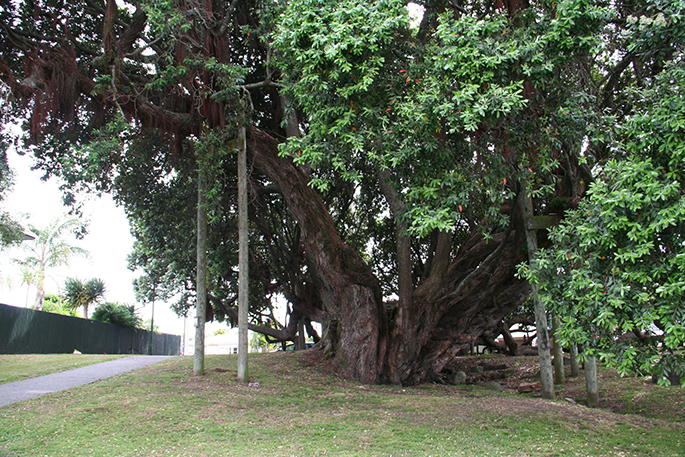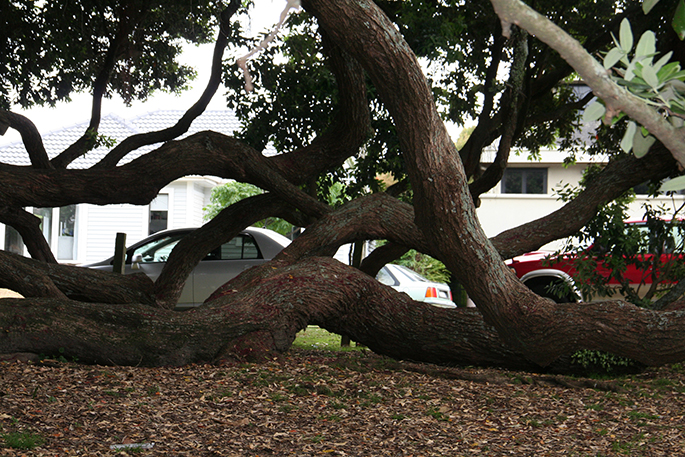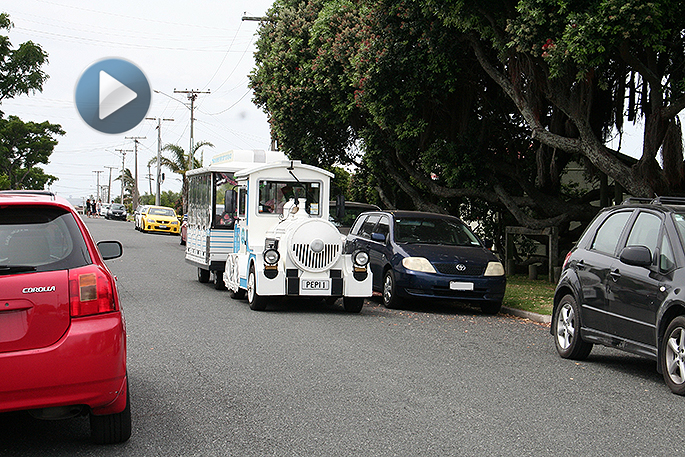One of the top tourist attractions at the Mount is unable to be fully enjoyed.
Masked by parked cars, the giant pohutukawa tree in Pitau Rd has been spreading itself magnificently for nearly 500 years without even a plaque.
A small seedling nudged its new frond up through the sand bar that we call 'the Mount” one morning between 1566 and 1616. It's been growing and flowering ever since.
This was in the same time period that Pocahontas was saving the life of John Smith, Galileo saw the moons of Jupiter through his telescope, the King James version of the Bible was being published, the first African slaves were being taken to North America, the English Civil War was happening, Rembrandt was painting his Night Watch, the Ming Dynasty was ending in China, King Louis XIV was starting to build Versailles, the Great Plague in London killed 75,000, there was the great fire in London, and Peter the Great became Czar.
Noel Davenhill, who has taken visitors from the UK to visit the tree, worked in vegetation management at the Rotorua Forest Research Insititute (now called Scion) for more than 40 years. He is sceptical of the tree's age.
"I would have thought this tree older than 450 years,” says Noel. 'It's looks to me a lot older than that. It's a beautiful tree."
About 300 years after pohutukawa took root, Pitau Rd was laid beside it.

The pohutukawa tree in Pitau Road, believed to be 450 years old.
The variety Metrosideros excelsa ‘Mt Maunganui' are all cutting-grown descendants from this tree, and it is of special significance to Ngai Te Rangi iwi.
Pohutukawa wood is dense, strong and highly figured. Maori used it in shipbuilding, since the natural curvy shapes made strong knees.
The Pepi Toot beach train runs most summer days, taking families and cruise ship passengers for rides. Departing from Salisbury Ave, it travels along The Mall, to Adams Ave, around to Banks Ave, then right into Pitau St, going past the 450-year-old pohutukawa tree.
'Passengers always comment about two things that they enjoy while on the train,” says train driver Lesley Smith.
'One is the cleanliness of the Mount streets. The other is the tree. It's very popular.”
She's unable to stop nearby for passengers to take photographs, as often cars are parked there. Parks are available further along and on the other side of the road, but that location provides fast and easy access for the drivers to walk through to the shops nearby.
'It would be great if there were markers in place so that parking was available for short-term five-minute parking,” says Lesley.
'Then the train could pull in there too. It's a shame because it's such an iconic tree and even the locals don't know about it.”
'We are planning to install an interpretation panel displaying the tree's history, in the next financial year – 2017-2018,” says Tauranga City Council parks and recreation manager Mark Smith.




3 comments
Parking, you're joking of course and signs!
Posted on 21-02-2017 12:14 | By Murray.Guy
As with the viewing of the Te Awanui waka (on the Strand) which was bought and paid for by the community for the community, there is no parking possible to view and appreciate, to tell the story, not that the rotting structure and waka condition is anything to show tourists with any pride. In fact, Tauranga City Council chooses NOT to provide any tour coach parking within our city, anywhere in Tauranga. The Mayor and Councillors agree to spend $4 plus million on an I-Site that forever and a day will attract no-one and require obscene ratepayer subsidies, a structure that could be built for $1 million, but can't maintain a waka, put up information panels!
Obscene..
Posted on 21-02-2017 18:10 | By Me again
is what it is at the way Tcc seem to spend money. On what the community don't need. Half a brain, the other half lonely. And for what, them only, and tourist.
maori ship building?
Posted on 26-02-2017 22:31 | By CC8
This is the first time that I have ever heard that the early settlers used the method of construction which requires knees . Or did you mean Maoris who were building wooden ships after Europeans arrived? As far as I am aware traditional canoes were made from a single log sometimes with another piece to lengthen and with higher topsides occasionally added...none of which is constructed in the method you describe. Ah it's a pity Wikipedia is so ambiguous.
Leave a Comment
You must be logged in to make a comment.